Digitising a commonplace book
Digitising sections of a 17th-century manuscript is all part of the job for our busy Imaging Services team who help provide access and discovery, one page at a time.
Commonplace books
The Alexander Turnbull Library’s Imaging Services team recently digitised some sections of a 17th-century manuscript, ‘ Commonplace book’, compiled by the Scottish schoolmaster John Bonar and his son of the same name.
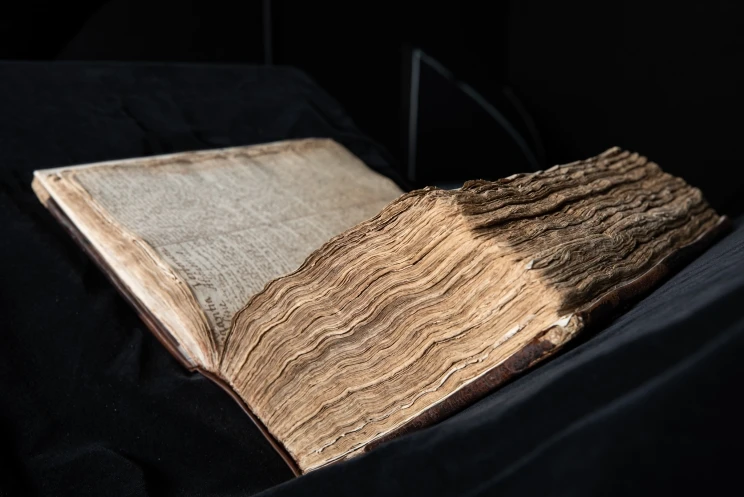
Commonplace book. Bonar family papers. Ref: MSY-6821. Photo: Mark Beatty
This ‘Commonplace book’ comprises a collection of poems, vocabularies, biblical passages, plays, letters, sayings, and observations, in English and Latin, composed or copied by John Bonar and his son between 1649 and 1672.
“The manuscript is known as a commonplace book”, explains Curator Rare Books and Fine Printing Anthony Tedeschi, “a term that describes a collection of enlightening or inspiring passages encountered in the course of reading and copied out by the owner. Sometimes the owner might also include information about their career or life.”
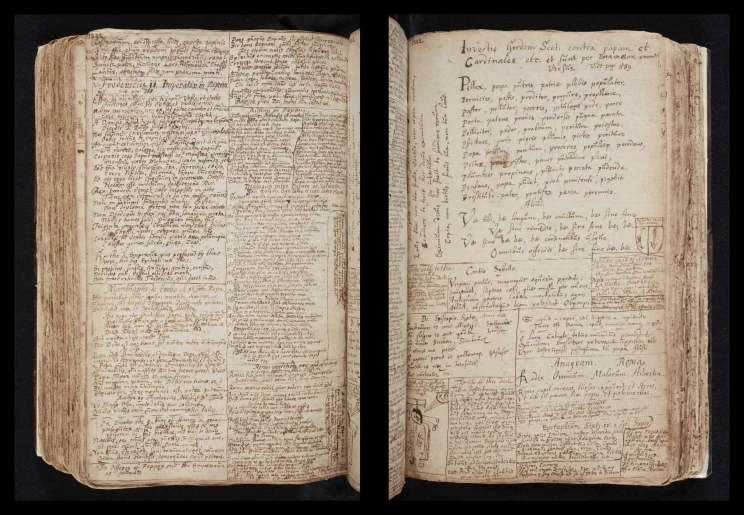
Commonplace book. Bonar family papers. Ref: MSY-6821. Alexander Turnbull Library.
The item’s descriptive record states that:
British editor and writer Mr Nicolas Barker has consulted this manuscript and notes that the basic purpose of the volume was as a schoolmaster's compendium of educational texts, but it seems to have become the vehicle for a lot of other miscellaneous texts. Quite a lot are probably copied from printed texts, but some are clearly original.
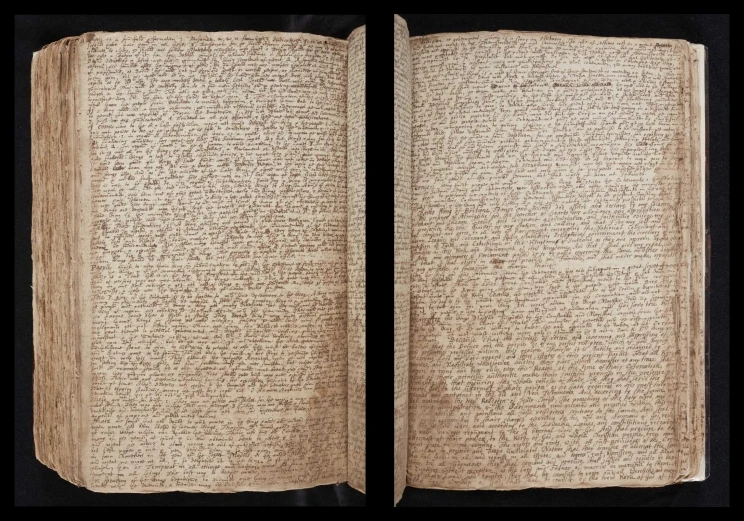
Commonplace book. Bonar family papers. Ref: MSY-6821. Alexander Turnbull Library.
Why we digitise collections
Although there’s nothing like seeing the ‘real thing’, there can be advantages to viewing a digitised version or digital surrogate.
Providing access to our collections for researchers who aren’t able to visit us in person is just one reason that we digitise material. Another key reason is the preservation of our unique taonga – some items are so fragile that handling the physical object puts it at risk.
A third reason could be called ‘discovery’. Digital surrogates can often allow an extra level of discovery that may not be accessible through viewing the item in person. This includes things like the ability to zoom in on details that can’t be seen easily with the naked eye. Conversely, there are advantages to being able to zoom out on larger items that may not be easily seen when viewed in a reading room.
By offering this extra layer of discovery to access, through our digitisation efforts, we help unlock the full research potential of our collections; and provide researchers with the access they need whenever and wherever they might be.
Challenges of digitisation
Digitising this Commonplace book had its difficulties because it is a large volume with a tight binding. This makes it a perfect example of the types of challenges the Imaging Services team often faces.
Usually, with bound items, the camera would be positioned horizontally and level to the table — rather than at an angle — and the item’s surface that is being photographed would lie flat underneath the camera, like in the letter ‘L’.
However, with guidance from Book Conservator Zeb Marshall we were advised that because of the weight of this item it had to be supported at an angle, rather than photographed horizontally.
Doing so also allowed us to capture as much of the text in the gutter, the inner margin of the book, as possible.

The author Llewelyn Jones in the digitisation studio. Photo: Mark Beatty
However, because of the angle, this made aligning the camera to the item a lot less straightforward than usual, especially as the angle changed every time a page was turned.
Thankfully, we got there in the end and the client was very happy with the result.
While there is clear research interest in this manuscript and we would’ve loved to have photographed the whole book, due to the complexities involved and the size of the volume (approx. 1665 pages!) we have not been able to do that, and would need to plan this as a special project.
For now, specific sections are available and can be viewed online.
Scroll down this page to view digitised images of the Commonplace book
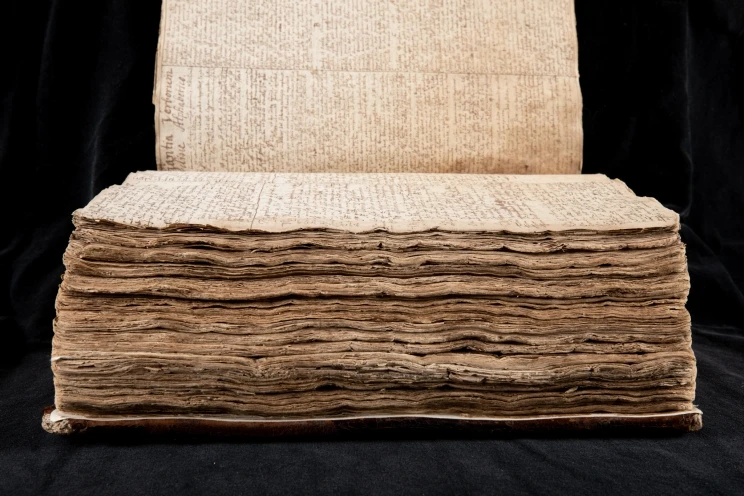
Commonplace book. Bonar family papers. Ref: MSY-6821. Photo: Mark Beatty
Public order request
This digitisation work was completed as part of a public order request for high-resolution images of specific pages from the item. The Imaging Services team regularly photographs and supplies images on request by researchers and clients for items in the collections that haven’t already been photographed and made available to order from our website.
Use our Ask a librarian service if you'd like to request high- resolution copies of any items in the collection. You can also click the 'send an enquiry' button on the item's webpage to request these images.
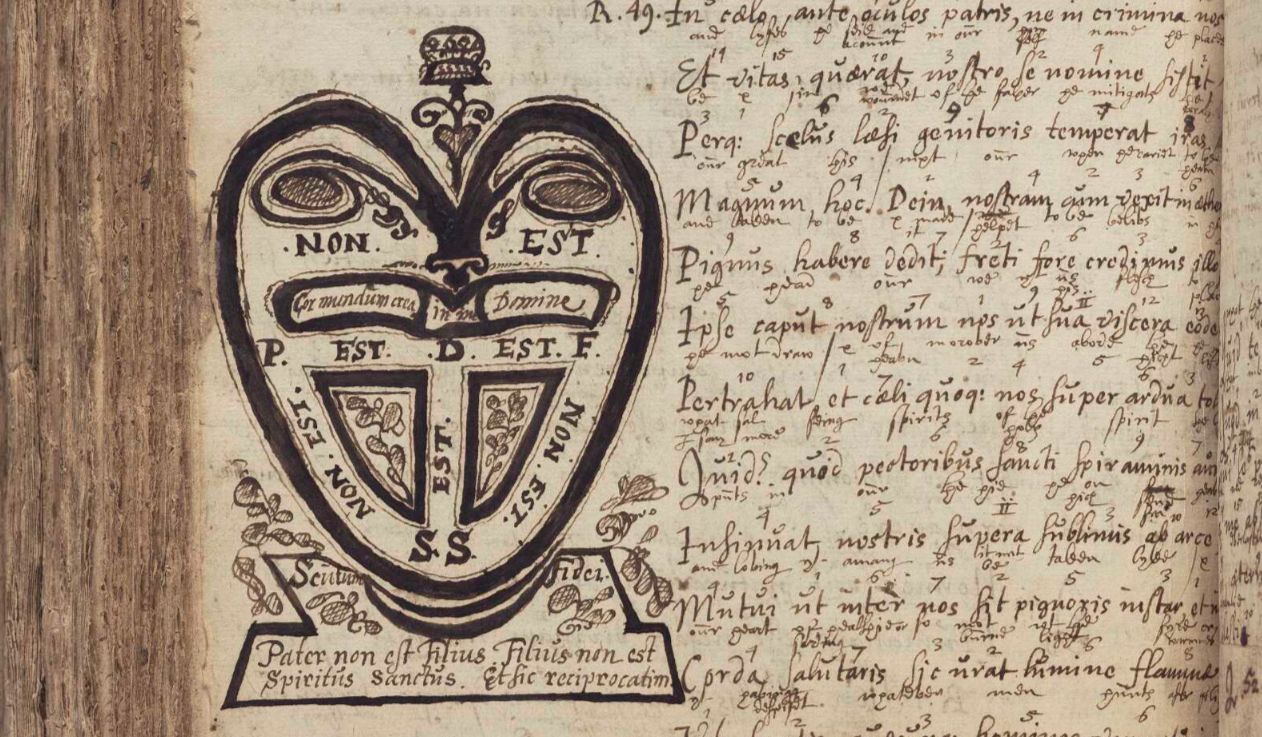
Detail of the Commonplace book. Bonar family papers. Ref: MSY-6821. Alexander Turnbull Library.
Detail of the
Thanks would love to see history information please